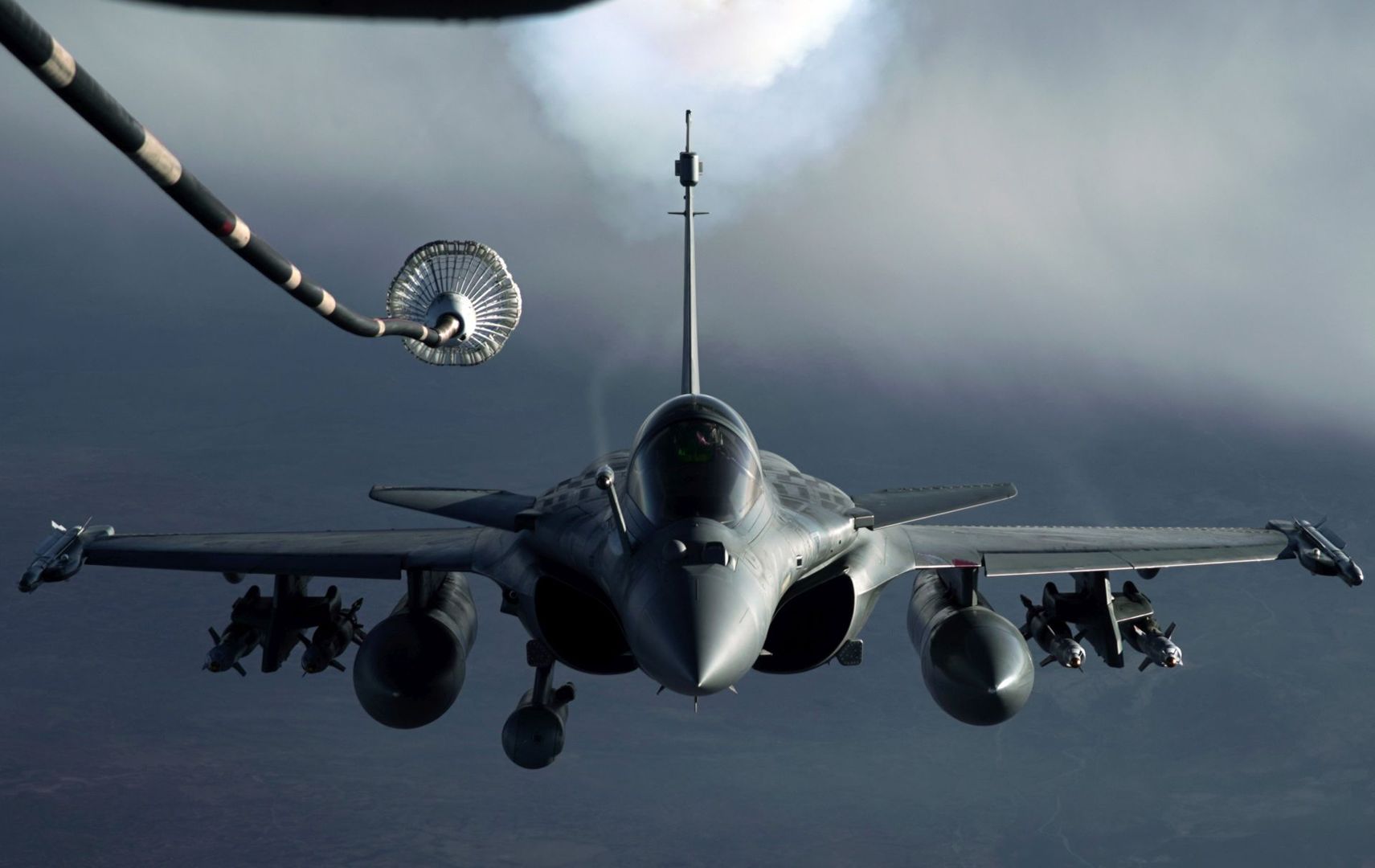Introduction
The AGM-86B air-launched cruise missiles and AGM-86C conventional air-launched cruise missiles were developed to increase the effectiveness of B-52H bombers. In combination, they dilute an enemy's forces and complicate defense of its territory.
General Information and Features
The small, winged AGM-86B/C missile is powered by a turbofan jet engine that propels it at sustained subsonic speeds. After launch, the missile's folded wings, tail surfaces and engine inlet deploy. The AGM 86B is then able to fly complicated routes to a target through use of a terrain contour-matching guidance system. The AGM 86C uses an onboard Global Positioning System (GPS) coupled with its inertial navigation system (INS) to fly. This allows the missile to guide itself to the target with pinpoint accuracy.
AGM-86B/C missiles increase flexibility in target selection. AGM-86B missiles can be air-launched in large numbers by the bomber force. B-52H bombers carry six AGM-86B or AGM-86C missiles on each of two externally mounted pylons and eight internally on a rotary launcher, giving the B-52H a maximum capacity of 20 missiles per aircraft.
The AGM-86C CALCM differs from the AGM-86B air launched cruise missile in that it carries a conventional blast/fragmentation payload rather than a nuclear payload and employs a GPS aided INS.
An enemy force would have to counterattack each of the missiles, making defense against them costly and complicated. The enemy's defenses are further hampered by the missiles' small size and low-altitude flight capability, which makes them difficult to detect on radar.
History and Background Information
In February 1974, the Air Force entered into contract to develop and flight-test the prototype AGM-86A air-launched cruise missile, which was slightly smaller than the later B and C models. The 86A model did not go into production. Instead, in January 1977, the Air Force began full-scale development of the AGM-86B, which greatly enhanced the B-52's capabilities and helped America maintain a strategic deterrent.
Production of the initial 225 AGM-86B missiles began in fiscal year 1980 and production of a total 1,715 missiles was completed in October 1986. The air-launched cruise missile had become operational four years earlier, in December 1982, with the 416th Bombardment Wing, Griffiss Air Force Base, N.Y., which deactivated when the base closed in 1995.
In June 1986 a limited number of AGM-86B missiles were converted to carry a high-explosive blast/fragmentation warhead and an internal GPS. They were redesignated as the AGM-86C CALCM. This modification also replaced the B model's terrain contour-matching guidance system and integrated a GPS capability with the existing inertial navigation computer system.
The CALCM became operational in January 1991 at the onset of Operation Desert Storm. Seven B-52s, from Barksdale AFB, La., launched 35 missiles at designated launch points in the U. S. Central Command's area of responsibility to attack high-priority targets in Iraq. These "round-robin" missions marked the beginning of the air campaign for Kuwait's liberation and are the longest known aircraft combat sorties in history (more than 14,000 miles and 35 hours of flight).
CALCM's most recent employment occurred in Sept. 1996 during Operation Desert Strike. In response to Iraq's continued hostilities against the Kurds in northern Iraq, the Air Force launched 13 CALCMs in a joint attack with the Navy. This mission has put the CALCM program in the spotlight for future modifications.
In 1996 and 1997, 200 additional CALCMs were produced from excess ALCMs. These missiles, designated Block I, incorporate improvements such as a larger and improved conventional payload (3,000 pound blast class), a multi-channel GPS receiver and integration of the buffer box into the GPS receiver. The upgraded avionics package was retrofitted into all existing CALCM (Block 0) so all AGM-86C missiles are electronically identical.
General Characteristics
Primary Function: Air-to-ground strategic cruise missile
Contractor: Boeing Defense and Space Group.
Guidance Contractors: Litton Guidance and Control, and Interstate Electronics Corp. (AGM-86C model)
Power Plant: Williams Research Corp. F-107-WR-10 turbofan engine
Thrust: 600 pounds
Length: 20 feet, 9 inches (6.3 meters)
Weight: 3,150 pounds (1,429 kilograms)
Diameter: 24.5 inches (62.23 centimeters)
Wingspan: 12 feet (3.65 meters)
Range: AGM-86B: 1,500-plus miles; AGM-86C: 600 nautical miles (nominal); classified (specific)
Speed: AGM-86B, about 550 mph (Mach 0.73); AGM 86C, high subsonic (nominal), classified (specific)
Guidance System: AGM-86B, Litton inertial navigation element with terrain contour-matching updates; AGM 86C, Litton INS element integrated with multi-channel onboard GPS
Warheads: AGM-86B, Nuclear capable; AGM-86C; Block 0, 2,000 pound class, and Block I , 3,000 pound class
Unit Cost: AGM-86B, $1 million; AGM-86C, additional $160,000 conversion cost
Date Deployed: AGM-86B, December 1982; AGM-86C, January 1991
Inventory: AGM-86B, Active force, 1,142; ANG, 0; Reserve, 0.
AGM-86C, 239, Block 0, 41; Block I, 198
Point of Contact
Air Combat Command,Public Affairs Office; 115 Thompson St., Ste. 211; Langley AFB, Va. 23665-1987; DSN 574-5014 or (757) 764-5014; e-mail: [email protected] and Oklahoma City






